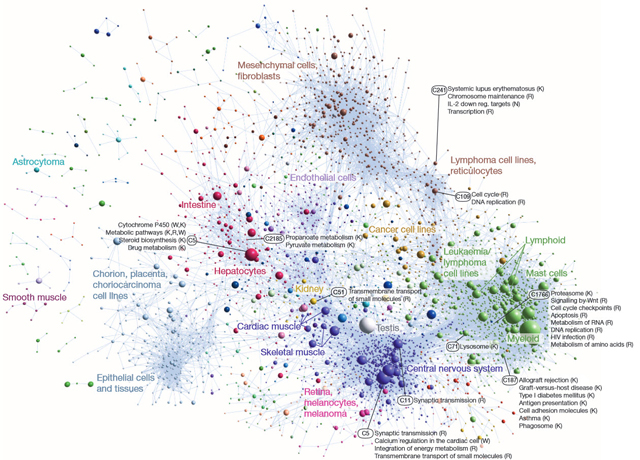- News
- Abhimanyu Singh
- A comprehensive atlas of human gene activity released !!!
A comprehensive atlas of human gene activity released !!!
A large international consortium of researchers has produced the first comprehensive, detailed map of the way genes work across the major cells and tissues of the human body. The findings describe the complex networks that govern gene activity, and the new information could play a crucial role in identifying the genes involved with disease.

We are able to pinpoint the regions of the genome that can be active in a disease and in normal activity, whether it’s in a brain cell, the skin, in blood stem cells or in hair follicles. This is a major advance that will greatly increase our ability to understand the causes of disease across the body.
The research is outlined in a series of papers published March 27, 2014, two in the journal Nature and 16 in other scholarly journals. The work is the result of years of concerted effort among 250 experts from more than 20 countries as part of FANTOM 5 (Functional Annotation of the Mammalian Genome). The FANTOM project, led by the Japanese institution RIKEN, is aimed at building a complete library of human genes.
Researchers studied human and mouse cells using a new technology called Cap Analysis of Gene Expression (CAGE), developed at RIKEN, to discover how 95% of all human genes are switched on and off. These “switches” — called “promoters” and “enhancers” — are the regions of DNA that manage gene activity. The researchers mapped the activity of 180,000 promoters and 44,000 enhancers across a wide range of human cell types and tissues and, in most cases, found they were linked with specific cell types.
Referene : www.kurzweilai.net/first-comprehensive-atlas-of-human-gene-activity-released
- RA at ALAGAPPA UNIVERSITY
4009 days ago
Radha AgarkarOpportunity posts - Atlas of ancient inter-ethnic group !!!
4088 days ago
JitNews - Research Associate (RA) at IOB
4009 days ago
Aadhira NaagraniOpportunity posts - Research Associate (RA) at INSTITUTE OF ADVANCED STUDY IN SCIENCE AND TECHNOLOGY
4009 days ago
Aadhira NaagraniOpportunity posts - Research fellow (PhD candidate) in computational biology – 2 positions
4018 days ago
Shruti PaniwalaOpportunity posts - Assistant Professor (Bio-Informatics) at Health and Family Welfare Department (Medical Education)...
4007 days ago
Radha AgarkarOpportunity posts - Five unique traits of effective computational biologist
4306 days ago
Jitendra NarayanBlog - The Institute for Molecular Bioscience (IMB), Bailey Lab
4303 days ago
Jitendra NarayanResearchLabs posts
